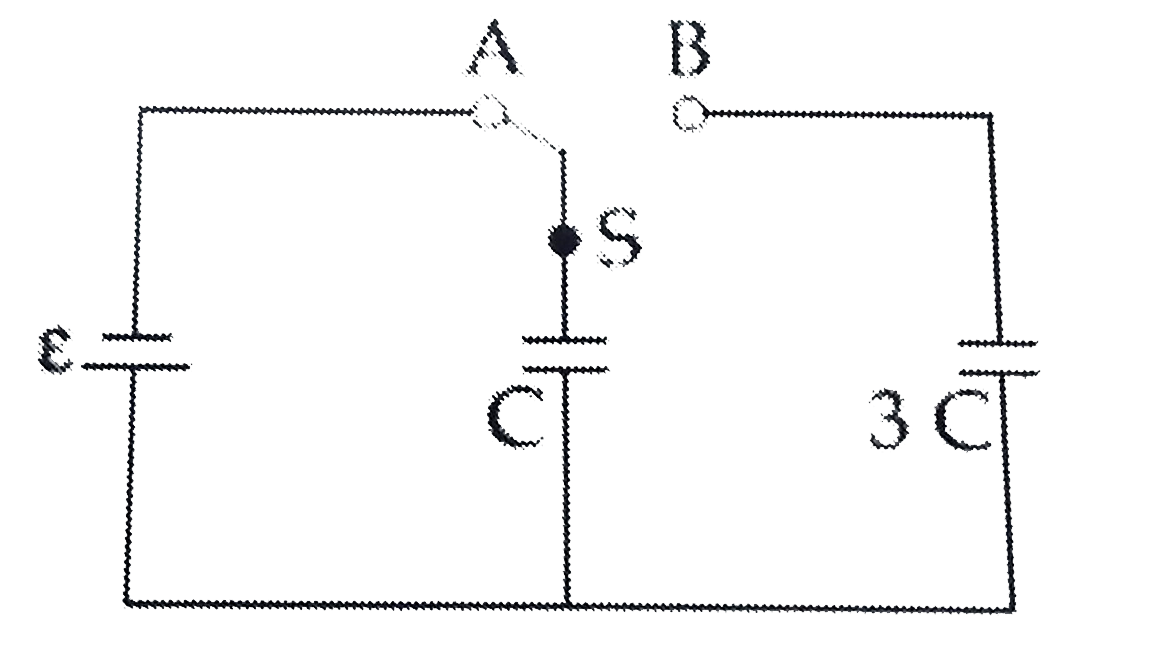Energy dissipates in LCR circuit in:
L only
C only
R only
all of these
The correct Answer is:C
To solve the question regarding energy dissipation in an LCR circuit, we can break it down step by step:
Step 1: Understand the Components of an LCR Circuit
An LCR circuit consists of three main components:
- L: Inductor (L)
- C: Capacitor (C)
- R: Resistor (R)
Step 2: Identify Energy Dissipation
In an electrical circuit, energy dissipation refers to the conversion of electrical energy into heat energy. This occurs primarily in resistive components.
Step 3: Analyze Each Component
- Inductor (L): Stores energy in the form of a magnetic field when current flows through it. It does not dissipate energy as heat.
- Capacitor (C): Stores energy in the form of an electric field when voltage is applied. It also does not dissipate energy as heat.
- Resistor (R): Converts electrical energy into heat energy due to the resistance to the flow of current. This is where energy dissipation occurs.
Step 4: Conclusion
Based on the analysis, we conclude that energy dissipates in an LCR circuit only through the resistor (R). Therefore, the correct answer to the question is that energy dissipates in R only.
Final Answer
Energy dissipates in LCR circuit in: R only.
---
An LCR circuit consists of three main components:
- L: Inductor (L)
- C: Capacitor (C)
- R: Resistor (R)
In an electrical circuit, energy dissipation refers to the conversion of electrical energy into heat energy. This occurs primarily in resistive components.
- Inductor (L): Stores energy in the form of a magnetic field when current flows through it. It does not dissipate energy as heat.
- Capacitor (C): Stores energy in the form of an electric field when voltage is applied. It also does not dissipate energy as heat.
- Resistor (R): Converts electrical energy into heat energy due to the resistance to the flow of current. This is where energy dissipation occurs.
Based on the analysis, we conclude that energy dissipates in an LCR circuit only through the resistor (R). Therefore, the correct answer to the question is that energy dissipates in R only.
Energy dissipates in LCR circuit in: R only.
Topper's Solved these Questions
- ALTERNATING CURRENTBOOK - RESONANCE ENGLISHCHAPTER - ALTERNATING CURRENTEXERCISE - SECTION C
16 Videos
- ALTERNATING CURRENTBOOK - RESONANCE ENGLISHCHAPTER - ALTERNATING CURRENTEXERCISE - SECTION D: Resonance
10 Videos
- ALTERNATING CURRENTBOOK - RESONANCE ENGLISHCHAPTER - ALTERNATING CURRENTEXERCISE - EXERCISE SECTION A
4 Videos
- ATOMIC PHYSICSBOOK - RESONANCE ENGLISHCHAPTER - ATOMIC PHYSICSEXERCISE - Advanved level problems
17 Videos
Similar Questions
In the figure shown , after the switch 's' is turned from postion 'A' to postion 'B' the energy dissipated in the circuit in terms of capactance 'C' and total charge 'Q' is :

View SolutionA series AC circuit contains an inductor (20mH), a capacitor (100μF), a resistor (50Ω) and an AC source of 12V,50Hz. Find the energy dissipated in the circuit in 1000s.
View Solution
Knowledge Check
An alternating supply of 220 V is applied across a circuit with resistance 22Ω and impedance 44Ω. The power dissipated in the circuit is
A1100 WB550 WC2200 WD(2200/3) WIn an circuit, V and I are given by V=150sin(150t)V and I=150sin(150t+π3)A. The power dissipated in the circuit is
A106 WB150 WC5625 WDzero
A series AC circuit containing an inductor (20mH), a capacitor (120 μF) and a resistor (60Ω) is driven by an Ac source of 24 V/50Hz. The energy dissipated in the circuit in 60 s is :
View SolutionIn a series LCR circuit R=200(Ω) and the voltage and the frequency of the main supply is 220V and 50 Hz respectively. On taking out the capacitance from the circuit the current lags behind the voltage by 30(∘). On taking out the inductor from the circuit the current leads the voltage by 30(∘). The power dissipated in the LCR circuit is
View SolutionA series LCR circuit with a resistance of 100√5Ω is connected to an ac source of 200 V. When the capacitor is removed from the circuit, current lags behind emf by 45∘. When the inductor is removed from the circuit keeping the capacitor and resistor in the circuit, current leads by an angle of tan−1(12). Calculate the current and power dissipated in LCR circuit.
View SolutionA series LCR circuit with a resistance of 100√5Ω is connected to an ac source of 200 V. When the capacitor is removed from the circuit, current lags behind emf by 45∘. When the inductor is removed from the circuit keeping the capacitor and resistor in the circuit, current leads by an angle of tan−1(12). Calculate the current and power dissipated in LCR circuit.
View SolutionThe average power dissipated in AC circuit is 2W. If a current flowing throuh a circuit is 2A, impedance is 1Ω, then what is the power factor of the circuit?
View SolutionIn an circuit, V and I are given by V=150sin(150t)V and I=150sin(150t+π3)A. The power dissipated in the circuit is
View Solution
